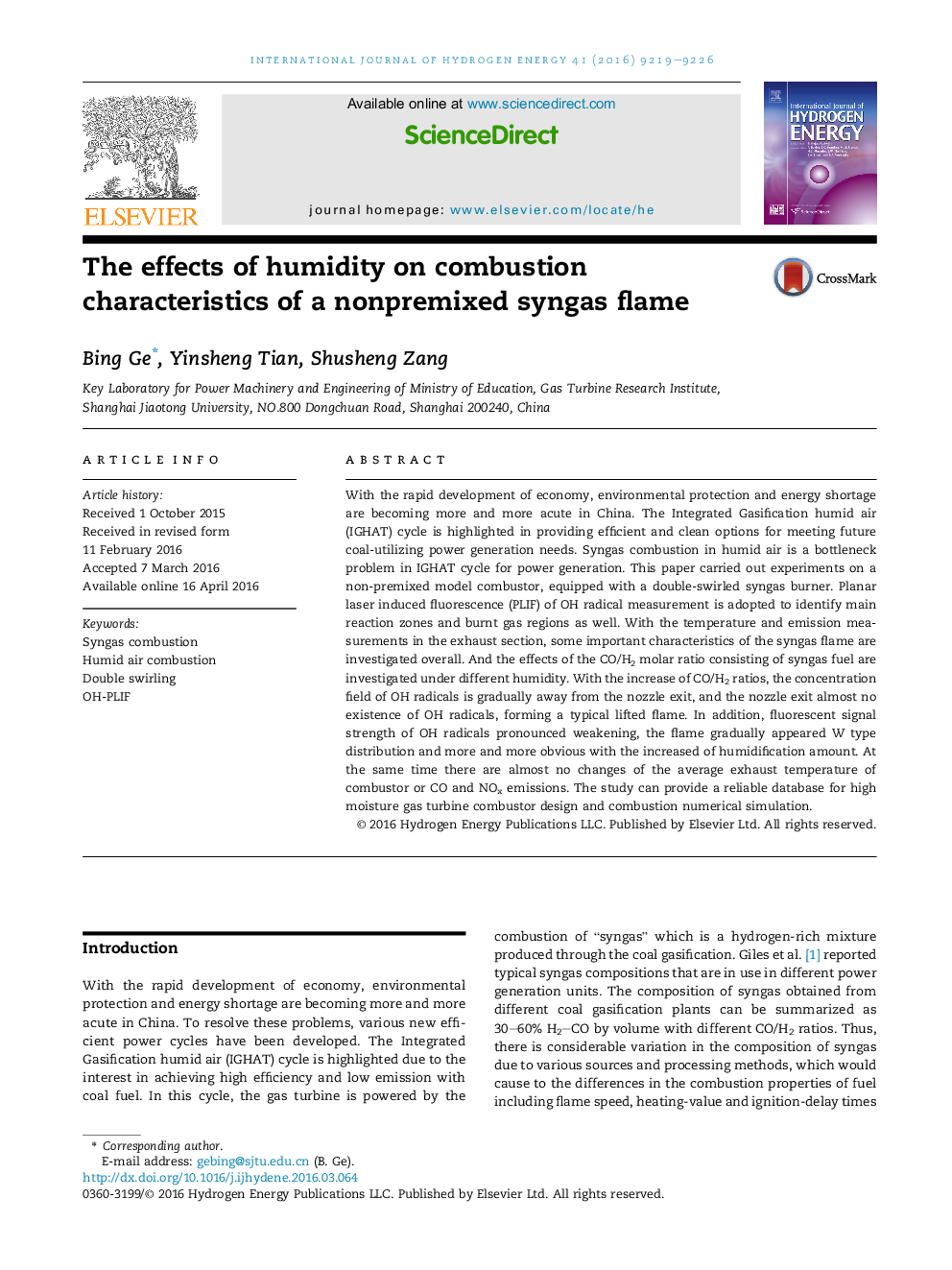| Article ID | Journal | Published Year | Pages | File Type |
|---|---|---|---|---|
| 1269942 | International Journal of Hydrogen Energy | 2016 | 8 Pages |
•Flame structures of syngas flame under different air humidity are presented.•Effects of syngas' CO/H2 molar ratio on flame structure are investigated.•Increasing air humidity will decrease NOx emission quickly when [H2O] > 16.7%.•NOx emission is not sensitive to CO/H2 ratios in humid air syngas flames.•Increasing CO/H2 molar ratio will increase CO emission in high humidity air.
With the rapid development of economy, environmental protection and energy shortage are becoming more and more acute in China. The Integrated Gasification humid air (IGHAT) cycle is highlighted in providing efficient and clean options for meeting future coal-utilizing power generation needs. Syngas combustion in humid air is a bottleneck problem in IGHAT cycle for power generation. This paper carried out experiments on a non-premixed model combustor, equipped with a double-swirled syngas burner. Planar laser induced fluorescence (PLIF) of OH radical measurement is adopted to identify main reaction zones and burnt gas regions as well. With the temperature and emission measurements in the exhaust section, some important characteristics of the syngas flame are investigated overall. And the effects of the CO/H2 molar ratio consisting of syngas fuel are investigated under different humidity. With the increase of CO/H2 ratios, the concentration field of OH radicals is gradually away from the nozzle exit, and the nozzle exit almost no existence of OH radicals, forming a typical lifted flame. In addition, fluorescent signal strength of OH radicals pronounced weakening, the flame gradually appeared W type distribution and more and more obvious with the increased of humidification amount. At the same time there are almost no changes of the average exhaust temperature of combustor or CO and NOx emissions. The study can provide a reliable database for high moisture gas turbine combustor design and combustion numerical simulation.
